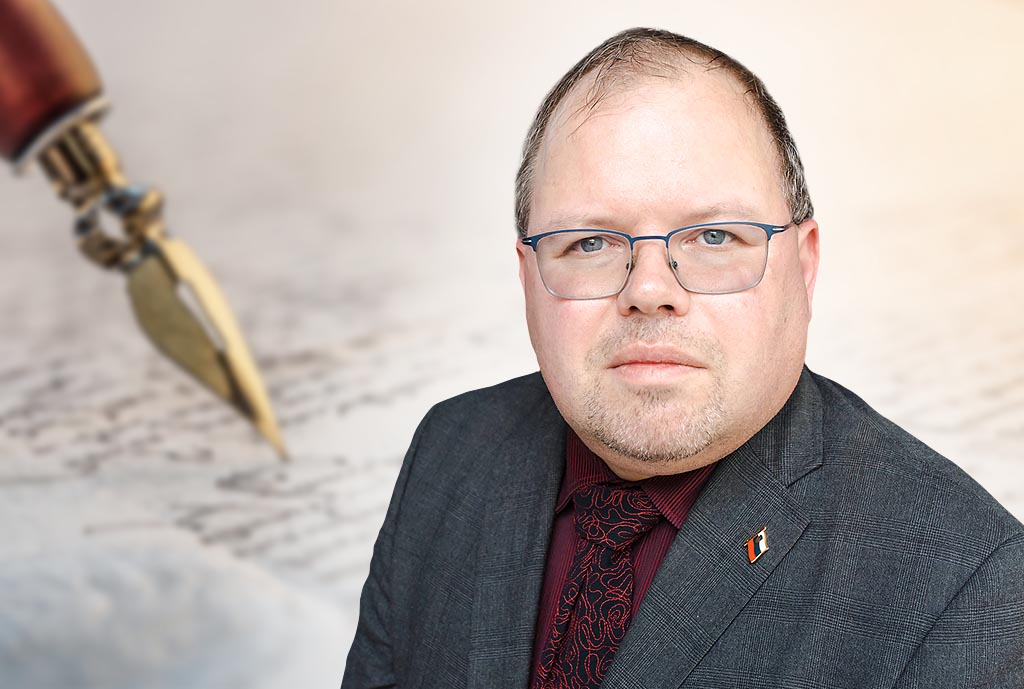By: Gašper Blažič
Among the many names of those who were involved, in one way or another, in the greatest tragedy of the 20th century—World War II with all its totalitarian ideologies—I will highlight two individuals this time.
The first is Fritz Verdnik, originally from Maribor. You will hardly find anything about him on the internet, except perhaps in articles about the martyr, a Franciscan friar named Placidus Cortese, who was from Cres and was murdered by the Nazis in Trieste. Verdnik is allegedly responsible for his terrifyingly horrific martyrdom, although he himself did not die until 2002 in Salzburg. “Ivo Jevnikar visited him before his death, but Verdnik’s icy cold eyes systematically dismissed the documented claims,” reported Iva Srebotnjak in the magazine Zaveza in 2009.
The second person, somewhat more well-known, is Odilo Globocnik (Globočnik), born in Trieste. Although his father was Slovenian, he was a Nemškutar*. He was one of the most notorious collaborators of the Nazi killing machine, and so uncontrollable in character that even the infamous Gestapo chief Heinrich Himmler was afraid of him. According to some reports, Globocnik was responsible for the deaths of at least two million Jews. Despite this, he is very rarely mentioned in heated discussions about the totalitarian regimes of the 20th century. General Leon Rupnik and Lovro Hacin, who were officials during the occupation (despite the fact that there was no puppet state in our country, like the NDH or Vichy France), are mentioned somewhat more frequently. However, for enthusiasts of revolutionary traditions, even these two are not particularly interesting.
It is quite a different story, however, when the discussion turns to Bishop Gregorij Rožman, Ban Marko Natlačen, the priest Lambert Ehrlich, economist Ciril Žebot, poet France Balantič, the priest Filip Terčelj, and not to mention the murdered young Slovenians like Lojze Grozde and Jaroslav Kikelj. The fates of those mentioned were varied: Balantič, a village guard, burned to death in a house during a partisan attack; Ehrlich was treacherously murdered along with Viktor Rojic; the same killer (Franc Stadler Pepe) murdered Ban Natlačen in his home, even dressed as a priest. Terčelj was killed after the war had already ended. Žebot, who was also promised a bullet to the head, emigrated, while Bishop Rožman, who did not wish to do so, could not return from Carinthia after the war, as the regime’s press spread the lie that he had “fled”, a claim still believed by a large part of the Catholic public today. And for all of those mentioned, it is characteristic that the “guardians of the grail” always become enraged whenever anyone dares to defend even one of these victims of the revolution. The old tune is played once again, with a generous dose of cursing aimed at the “modern defenders of collaboration”. And all this simply because someone dared to challenge the prescribed structural lie on which the indoctrination of all present generations is based.
What does this tell us when we consider the silence of the revolutionary lackeys regarding Verdnik and Globocnik? Mainly, it shows that the communist regime, along with all its legacy, never truly cultivated a genuine rejection of Nazism and Fascism. The crocodile tears shed annually by contemporary red-star supporters over the Holocaust take on an almost grotesque dimension when a wave of hatred towards Israel and Jews emerges from the leftist admirers of Hamas. The communist regime taught unstable people to hate mainly those who were never true collaborators with the occupiers, as it always needed compliant sycophants who, in Boris Kidrič’s words, “bend their backs and press downwards”. They are programmed like robots to always defend the communist “truth” and will never understand that the coerced oath of the Home Guard at the Bežigrad Stadium saved lives rather than destroyed them. This is also why there were so many offensive reactions to the entirely legitimate opinion expressed by Prof. Dr Žiga Turk about the Home Guard a few months ago. These reactions have nothing to do with reason but are the result of programmed mythomaniac intolerance and satanic spiritual slavery that cannot tolerate the truth.
It is clear, however, that such mythomaniac constructs primarily serve to maintain the “appropriate” public opinion and legitimise the successors of the parallel mechanism. Because the authors of these constructs are deeply aware of the moral capital of the counter-revolution, but they continue to exploit it nonetheless. Fortunately, the spring (right-wing) camp has at least learned not to fall for these ideological provocations anymore.
*Nemškutar (German: der Deutschthümler) is a person of Slovenian descent who chooses to identify with the German social, cultural, and political sphere. Such a person typically advocates for the Germanisation of Slovenian areas and incorporates German words into the Slovenian language.

